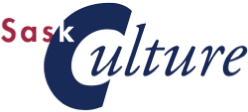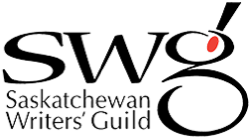Mari-Lou Rowley – I understand you come from a long line of artists. Your father, mother and grandmother were Cape Dorset artists, and your sister Annie Pootoogook is also a renowned contemporary artist. So artmaking is in your blood.
Cee Pootoogook – Yes, they were all artists, and my sister Annie Pootoogook and my brother Goo.
ML – What was it like growing up around so much creativity and so many artistic people in your family?
CP – Yes, of course. I used to watch them a lot when I was growing up, especially my mother and grandmother. I watched them when they were drawing and I learned so much from them.
ML - I love Inuit art—I have four sculptures myself, two owls, a walrus, and a seal. What first drew you to sculpture?
CP – You mean carvings?
ML – Yes.
CP – Yeah, I used to do a lot of carvings when I was young before I became a printer¾from when I was a teenager to about 27. I did a lot of transformation of seals, bears. But when they opened the print shop they started printmaking here. One of the guys in the shop passed away, so one of the bosses told me to apply. So I applied and got the position to help run the print shop.
ML – And then you turned to drawing and printmaking. The detail in these works is amazing. I love your dancing bears, which we are using on the cover and inside the magazine. I understand the Polar bear, or Nanuk, is a powerful animal and shamanic figure in Inuit culture. I read that they are one of the biggest mammals that live and hunt on both land and under water. And also that the dancing bear has specific meanings in Inuit culture, I found a site that said the dancing bear image was originally inspired in the 1960s by your home community of Cape Dorset, Nunavut.
CP – Yes, that’s right.
ML – Its concept signifies the transformation between shaman and spirit helper. Can you talk about what it means for you?
CP – It’s sort of like a happy bear, or serving bear, or a dancing bear. When I make a dancing bear, it is more like a happy bear. Sometimes I do a swimming bear, more like a dancing bear under the water with fish. I just did a drawing like that a few days ago.
ML – The theme of the magazine is “Snowlight.” I wanted to think about snow and the light it creates in winter in another way. But in English, we only have one word for snow. I understand that in Inuktitut there are over 50 words for snow.
CP – There are a lot of words for snow, and ice too. Some we can’t explain in English. In my home town, they have a lot of names, but I don’t remember the difficult words now.
ML – I love the print “Summer Buzz” of mosquitos surrounding a moose. It makes me itchy just to look at it.
CP -- Hah hah! Oh yeah, alright.
ML – I can imagine the mosquitos get pretty bad out there.
CP - Yes, when it’s really hot they get bad sometimes. But nowadays, we don’t have many mosquitos, not for the past two years that I know of. On Canada Day, in the 70s and 80s on July 1st, we would get lots of mosquitos. But now we don’t get many mosquitos on July 1st. I just realized that a couple of years ago.
ML – I was going to ask you how climate change has affected Cape Dorset.
CP – We see the ice right now, and the seawater. There’s a little bit of ice but not much nowadays. We’re supposed to get a lot of ice down by the edge of the village. We’re not supposed to see the seawater. We have snow now, but it’s kind of late.
ML – How has that affected the polar bear, for instance?
CP – For sure. A lot of bears have been coming around our town.
ML – Are they looking for food?
CP – Yeah, they are at the dump most of the time. We had a big polar bear yesterday and another a couple of days ago. But we had to shoot them because they were coming into the town.
ML – When you shoot them I expect you use them for food and their fur.
CP – Sure, we use all of the bear; we eat the meat, we use the fur, everything.
ML – I know hunting has been an important part of Inuit life and culture. Is it still part of your life now?
Cee - Yes, very much. Almost every day, in the ocean and out near our hometown. This morning there were a couple of seals on the ice.
ML – Do you go out onto the land to hunt?
CP – No, I’m not really going out to the land. Mostly nowadays I stay around home and do my artwork. But when our hunters go hunting they always give us food, even if we don’t ask them. This lunch hour I had a little bit of caribou raw.
ML – Wow! That’s so different from what we eat here. What is your favourite food?
CP Probably walrus.
ML – Do you still make igloos when you hunt?
C – Yeah of course, but now it’s difficult to find hard snow to build an igloo. The snow is not always hard enough, now it’s kind of soft.
ML – There’s one thing that we do here in Saskatchewan that is similar to what you do. I have been part of making several prairie snow shelters, or quinzees, mostly for fun when being at retreats with other writers and artists. You just pile a bunch of snow into a big mound, and then you dig into it as a kind of shelter.
C – Yeah, nice.
ML - We all need to laugh these days. What makes you laugh?
C – Yes, we need that too. Probably people having fun, making funny faces, just being silly--yeah.
Editor’s note: Kinngait (Cape Dorset), is on the northerly most point of Dorset Island, one of a cluster of small, remote islands in the Northwestern Passage in Nunavut. The following quote and link further describes the effect of climate change in the area.
“In the winter, the ice forms on the ocean and connects all the surrounding little islands so that people can travel great distances on the ice. In the summer, people travel by boat. The elongation of this middle season where there is too much ice to boat but not enough to snowmobile really strands people and removes access to the preferred fishing and hunting spots.” – Audrey Hurd, Kinngait.
https://www.cbc.ca/news/canada/north/climate-change-arctic-animals-nwt-1.6667887




